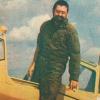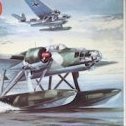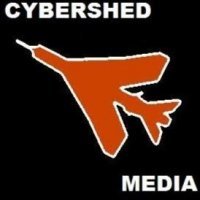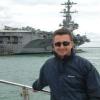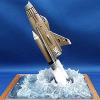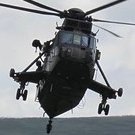Search the Community
Showing results for tags 'D-day'.
-
Hello All, I'm participating in the STGB on the C-47. Thought you would enjoy the pics also. The only thing I added was the seat belts from masking tape and various levers on the console. The one thing I have learned over the years is to check the fit of doors, windows etc and install them early in the assembly so you can fiddle with them easier...especially when the instructions tell you to put them on late in the assembly. I did that for all the doors, the two cockpit side windows and the wing fillets. I am glad I did quite a bit of fiddling was required and it is so much easier when the fuselage is not buttoned up. Even with that there is still some filling and rescribing required. In any case enjoy the pics...any comments or questions are appreciated. Sorry a couple are a bit out of focus..didn't notice until I after I had them on IMGUR. All the Best! Don
-
Trying to make my cabinet more colourful I've decided to built my Mosquito FB.VI as the intruder operating from the UK in the D-day period of 1944. There are several pictures known of such black-bellied planes from the RAF squadrons No.23 (PZ170), 605 (NS838) and RCAF No.418 (HJ719, HJ722). There's even a FB.VI used for night recce flights over Italy by No.60 Sq. SAAF, but it doesn't sport code letters - just the serial in red. But no one of them feature AEAF stripes on the wings. My question is whether the abovementioned units were the only ones using the FB.VIs in such (black-bellied) camouflage? EG the Polish No.305 and No.307 Squadrons were also flying the FB.VI (including night intruder sorties), but all photos known to me show their Mossies in standard NF scheme with SGM undersurfaces. And the main question appears, whether any black-bellied Mossies were flown with AEAF invasion stripes on the wings? The ones I've found have them only on the fuselage underside. Cheers Michael
-
Hi all, this is AZ's 1/72 Spitfire IXc. Not a bad kit with nice surface detail, but the next time I would try the Eduard kit. Decals came from the Kagero booklet on the Spitfire IX. The model represents an aircraft of No. 340 Sqn filmed at Merston apparently on 18 June 1944 before flying to Normandy. It was piloted by Sous Chef Denys Boudard who had joined the RAF after quite a remarkable escape from France. On 29 April 1941, Boudard and a fellow conuntryman had dressed to resemble German mechanics, walked into a Luftwaffe airfield, stole a Bücker Jungmann and flew to Britain. Two pictures of this aircraft can be found in Christopher Shore's and Chris Thomas' fantastic book on the 2nd Tactical Air Force. These pictures also show that this aircraft was unusually heavily weathered by Spitfire standards, something I tried to replicate on the model. Thanks for viewing and all comments welcome.
- 12 replies
-
- 44
-

-
Recently I became interested in Typhoons operated on D-Day or in the immediate aftermath (full invasion stripes). There are some good photos in Shores/Thomas, 2nd TAF and on the IWM-site. It seems that the 3-bladed propeller was more common at this time than the 4-bladed type, but on many photos you can’t tell because the engine is running. It is even more tricky with the tailplanes. On most photos I can’t say whether a Typhoon had the older small tailplane or the Tempest-type. Is there any trick or rule of thumb to decide these questions based on the existing photos? Thanks in advance Ole
-
Has anyone seen any pics of Hawker Hurricanes with D-Day invasion stripes on them? Any links welcome.
- 4 replies
-
- D-Day
- Hawker Hurricanes
-
(and 1 more)
Tagged with:
-
Hi folk's here's Tamiyas carrier which I posted in RFI earlier but with two of the figures supplied with the kit added to the vehicle dio that I did for the D-Day GB a couple of years ago I am not a figure painter but it was a shame not to use them as they are really nicely detailed.Many thanks for looking in,
-
The Roden kit does not give the individual code, carried on the tail, of this aircraft. Does anyone know what it was or must I simply invent one? Separately, was this aircraft with the unit for D-Day? The kit lacks the upper wing and fuselage stripes as is correct for the July 1944 date given, but have they been carried and then overpainted, rubbed off? Either would present an additional way of breaking up blank expanses of Olive Drab. Further, did these aircraft appear with the multi-toned ODs often seen on early aircraft (this is after all a 1941-ordered aircraft) including the Medium Green blotches, or were they more consistently painted/repainted? Most views of D-Day period aircraft appear to lack the more extreme variations seen elsewhere, unless I'm just not looking at enough photos.
-
Three Days in Hell 7-9 June 1944 Heimdal Publishing The Normandy campaign of 1944 is probably one of the most documented areas of WWII. This new book from Heimdal concentrates on one part of the Normandy landings for a period of 3 days after the landing the 7th to the 9th of June 1944. The area concentrated on is the Canadian landings and the subsequent advance into Normandy which was quite bloody. The book makes valuable use of testimony from both sets of combatants, and the local French population who were caught up in the fierce fighting with no where to go. The book offers a degree of completeness not offered in some publications through the use of this testimony, plans of the battles; and photographs (wartime & contemporary). Also of interest is a short section at the beginning of the book which shows what life was like before the 6th of June for all those involved. The book is A4 softbound with 160 pages featuring maps, colour and Black & white photographs. Conclusion This is primarily a history book covering these 3 days and the fighting between the Canadian and the Germans. It covers this excellently and the addition of testimony from the local French population shows how hellish it must have been for all sides. The photographs will be of some use to us modellers as well. Highly recommended. Review sample courtesy of
-
This was something of a themed build, begun in 2014 in acknowledgement of the 70th anniversary of the Normandy landings. One of their early kits, representing the half-fabulous initial high-altitude variant. A few were issued to FAG.123 at Guyancourt, with the thankless task of providing adequate photoreconnaissance cover of the Normandy area in the weeks following the invasion. Significantly increasing an aircraft's wingspan and area (and this was little more than two plugs inserted between the existing G-5 wings and fuselage) rarely works well, and this was no exception. The aircraft was only present for a brief time, being ostentatiously left outdoors in the hope that the Allies would take care of it. 'Oh Heinrich, you make me shudder' one Luftwaffe airman is said to have remarked. I am unsure about the historicity of some of the details, but the camera setup of the G-5, with a tall fin of the final variants, and a longer tailwheel (not needing so much AoA on takeoff), along with the removal of all guns bar the engine cannon seemed consistent enough, along with the overall RLM76 scheme. I hope you like it. http:// http:// http:// http:// http:// http:// http:// http://
- 4 replies
-
- 7
-

-
- Luftwaffe WWII
- Bf109
- (and 5 more)
-
Hi, Few Airspeed Horsa gliders with troops started about midnight of 5th June 1944 in aim to capture one or more (I am not that much expert to know it exactly) bridges in Normandy - one of the most fameus was so called Pegasus bridge. Here is a basic info https://en.wikipedia.org/wiki/Pegasus_Bridge. Some years ago I made a Horsa machine from this action: I added some details inside and modified skid following the photos. On the contrary to Albemarle, which was badly weathered I assumed that Horsa was almost directly from production line (perhaps I was wrong?) - so even I made her with satin finish... Comments welcome Cheers Jerzy-Wojtek
- 18 replies
-
- 24
-

-
- RAF
- Airspeed Horsa
-
(and 1 more)
Tagged with:
-
So, I finally got my Beau finished over the Christmas holidays. I'm quite pleased with how it came out. I now just need a white / EDSG / DSG / white camo'd one! regards, Martin
- 18 replies
-
- 32
-

-
- Coastal Command
- D-day
-
(and 1 more)
Tagged with:
-
Happy Christmas, folks! Another Airfix Beau from me (I really like this kit). Sorry there aren't any more build pics, but I got to this advanced stage and thought I'd take some pics. Model is essentially oob, although I did add an internal fuselage bulkhead and a heating pipe to the cockpit. There are also Little Light lenses (2.5mm diameter) sitting behind the fuselage landing light cover, and I used one of the options from the Xtradecal Beaufighter sheet. Quite pleased with the finish, although my enamel 'dot' streaking on the top camo is too subtle. regards, Martin
-
Valiant Wings Airframe Extra No.1 D-Day to VE Day. Many modellers these days seem to like building subjects based on a theme, which can often be historical events. This series of books from Valiant Wings will look at specific areas, and events in the history of aerial warfare with this in mind. Each title will cover the history and details details of these event. Each will contain period photographs, and colour artwork from Richard J Caruana. More importantly to the modeller each will contain kit builds in all three major scales (1/72nd, 1/48th and 1/32nd) from modellers; Dani Zamarbide, Steve A. Evans and Libor Jekl. The books are A4 soft cover format very well printed with clear text, good artwork and clear build photographs. The first book in this series covers The Air Battle Over Europe in the period D-Day to VE Day. The colour artwork features many aircraft wearing D-Day stripes as you would expect. The seven models features in this volume are; Airfix 1/72 Douglas C-47A Airfix 1/72 Supermarine Spritfire PR.XIX Hasegawa 1/48 Messerschmitt Bf 109G-10 Academy 1/48 Lockheed P-38 Lightning HobbyBoss 1/48 Messerschmitt Me 262B-1a Schwalbe Hasegawa 1/32 Republic P-47D Thunderbolt Hasegawa 1/32 Supermarine Spritfire PR.XIX Also of interest to the modeller is a list of commonly used colours of this period with reference to commonly used Enamel and Acrylic paints. Conclusion This looks like the beginning of a great new series from Valiant Wings. The book mixes history, profiles and modelling in a fresh new way. Highly Recommended. Review sample courtesy of
- 1 reply
-
- 2
-

-
- Valiant Wings
- Airframe Extra
-
(and 1 more)
Tagged with:
-
Kicking off with my first AFV Club Churchill Mk IV with Mk5, L/50 6pdr Gun for this build Unit information TBC
-
My entry for this GB will be this: Inevitable sprue shot: and this is the scheme I'll be building it as: This will be pretty much OOB, except for the Barracuda resin intakes and exhaust. I intend to build it flying so I'll be using some prop-blurs left over from my Mosquito build last year so the stand MAY contain some element of cotton wool
- 43 replies
-
- 1
-

-
- hawker typhoon
- d-day
-
(and 1 more)
Tagged with:
-
Hi folks, Just finished* the Airfix 1/48th DH Mosquito FB VI as a 235 Sqn Coastal Command machine, LR437 'T', based at Portreath in June '44. The ol' Airfix kit is not state of the art anymore but by jingo, it's a fun build with sufficient detail for me and good fit**. I was particularly happy with the way the cockpit scrubbed up. It was built for a 'Classic Airfix' GB on another forum and, as I've had this kit in the stash since the late '80s, I thought it was high time I built it. I used it to try out some weathering techniques I hadn't tried before on a 1/48th aircraft (I usually build in the gentleman's scale), and I think it turned out quite nicely. Hope you like it. regards, Martin * OK, so I lost the tailwheel and am awaiting the arrival of a replacement c/o Airfix spares department **Apart from the fit of the wings to the fuselage; that was appalling! They're none too robustly joined at all.
-
Hello folks. My car building for the French Fancy GB is going terribly, and an Airfix Lightning F.6 wasn't getting the enthusiasm going. Then I remembered I had this in the loft: P-38 Lightning by jongwinnett, on Flickr I don't know much about P-38s, but the Academy kit looks half decent and I'm hoping a quick, OOB build will get me back on track. I've made a start (with the cockpit interior, natch) but first the obligatory bits shot:
-
Howdy all. Hopefully you will not mind someone from over the pond joining you in this build. I plan to make one of Eduard's little gems in the form of Mk.IXe, MK329, flown by W/Cdr J. E. Johnson, CO of No. 144 Wing, June, 1944. Yes this is the one from the Eduard Royal Class with the beer kegs, who does not like the idea of inflight beverages! I will be using the Mk.IXe over-trees, with bits from the royal class box as needed. I like this one, and it will be my second spitfire with invasion stripes. The first one was...,not good, so hopefully I am a little more experienced. I have already built one in Czech markings from the Eduard "Boys are Back' edition and it went together wonderfully, so I do not see any problems. I am sure everyone is aware of this kit, as a few others are building them, so forgive me for not posting shots of the sprue trees. More photos of the build to follow. Thanks.
-
I reviewed this kit quite recently and as with most of Airfix's recent releases, they're just crying out 'BUILD ME' !! So the initial plan is to pretty much just build it out of the box and have some fun, but there's some temptation to add some ground stuff in too and make a diorama. Depending how things go, it might evolve as it progresses. After spending half an hour or so, most of the interior is pretty much assembled, so I'll leave it all to set before getting some primer and paint on. I'll get some pictures over the weekend of the progress. So far, very impressed with the kit, a quick dry fit of the fuelage halves reveals no issues....fingers crossed!
-
Hi, After Ford Trimotor I would like to show another impossed to army airliner. The most popular one in whole history - Douglas C-47 Dakota. I know that C-47 was specially produced (not impossed) for army, and it was opposide - the civiled C-47 made huge progress in air transport after WWII - anyway, originally Dakota was an airliner. Without war it would not be so successfull. Model is Italeri, 1/72 almost OOB (I did some work inside, but not seen now). Markings are from D-Day, USAF, 436th TCG, 81 TCS. The original "Buzz-Buggy" C-47 survived war and was used after WWII in Urugway as civil a/c and was scraped in 1951, after an accident I think. Another C-47 is painted and exposed as "Buzz-Buggy" in Le Bourget Museum of Aviation and Space in Paris. Both sides nose arts and sorties "info table" on fuselage are hand painted on decals, other decals from drawer. Comments welcome Regards Jerzy-Wojtek
-
Afternoon chaps, Now it has most certainly been a while since I have posted here, after having a break from modelling over Christmas. However, while getting back into the routine I have managed to bash up this old thing It's the first model I've made in a couple of months and the first I've made with clear parts/transparencies so the windscreen didn't turn out as I expected. It is also the first model with the "Wet Mud" effect using filler, brown acrylic paint and Klear. It is built completely OOB apart from some additional extras in the trailer found in the Spares Box. The next thing I'm building is a J-35J Saab Draken and a LCVP boat Specs: Willys Jeep With Trailer (USA) 1st US Infantry Division Normandy, France 6th June 1944 D-DAY Here she is Sorry if the pictures aren't up to scratch in quality, they were taken on my new iPad but they're alright I guess Thanks for looking fellas please comment with improvements etc. ~Dylan
-
Mulberry Harbour 1944 L'Arsenal 1:350 D-Day; 6th June 1944, the Allies finally start the assault on occupied Europe in order to push back the occupying German forces. Of the many landing beaches along the Normandy coastline two were to play a bigger role, after the initial landings had taken place to secure the beachheads. Initially, beach assault landings had to be made as all the docks and ports were held and dominated by the enemy; so the only way to get the troops, their armour and supplies ashore was by using large Landing Ship Tanks (LST2's) to make a direct assault onto the beaches. The problem with the beach landing is the time it took to offload before the LST's could withdraw from the beach. Each LST2 could carry as many as 22 tanks or 33 trucks and the turnaround at the beach could take an hour or more; with the implications that the ship could become stuck until the next tide twelve hours later. The solution was for the allies to construct their own artificial harbours and assemble them as near to the beachhead as possible but with enough depth even at low tides to maintain continual operations. The intention for having artificial harbours, which were given the codename "Mulberry", was so that the craft could arrive, offload and depart without the limitations of the tides. Two locations were identified; one off Gold Beach at Arromanches (Mulberry B ) and the other at Omaha Beach (Mulberry A ) situated 20km to the west. Within the confines of each Mulberry Harbour there were three 'ports', the main port, also known as the General Service Pier, was a series of up to seven pontoons connected in line to form a long jetty which was positioned east-west and used to take small ships such as coasters etc. The second port was primarily for LST2's and designated the LST2 pier and this consisted of two spud pontoons assembled in a 'T' formation with the head of the T facing the shoreline. The third pier was a smaller section of 3 pontoons in line, running north-south and was much closer into the shore which, due to the lesser depth available, could only be used as a stores or barge pier for smaller craft. All three piers within each harbour were then connected to the shore by a long line of floating bridge sections; with as many as 44 in a single link. Once the beachheads had been established and secured the assembly of the two Mulberry Harbours commenced; the first vehicles were able to be offloaded and driven to the shore by 9 June, just three days after the initial invasion. The Kits To make up a model or diorama of any of the ports within the Mulberry Harbour will need one or more kits from L'Arsenal's Mulberry Harbour series. Each kit is comprised of resin main parts, with some having photo-etch detail parts. The pieces are supplied in small zip-lock type clear bags and packed within a sturdy white cardboard box with top lid opening. Some of the items are very small and fragile and so the sturdiness of the packaging is paramount, especially if they are going to be stashed for a while before building. These kits are produced in resin with very crisp and accurate details. Two types of pontoon pier assemblies are available; a standard spud pontoon and a LST offloading pontoon. The difference between the two being the addition of trellis work and ramp parts with the LST pontoon. Other associated components would be required if one wanted to construct a full Mulberry Pier setup (an example of which is illustrated at the bottom of this review) and these can be purchased separately from L'Arsenal. This means that any one, or all, of the three ports/pier types can be built just by adding more sections. I have broken this review down into stages, each describing one of the kits from the Mulberry Harbour series. Spud Pontoon The first unit, MB 350-01 Mulberry Spud Pontoon is the main platform and is common to all three ports/pier units. These pontoons, with spuds (legs) fitted at each corner that could be raised and lowered to compensate for the tidal range, where the main functioning unit the harbour. Once in position ships and landing craft could berth to them and offload their tanks, vehicles, personnel and stores at any time of day or night and without concerns of high or low tides affecting the offloading process. MB 350-01 Spud Pontoon set The kit consists of 46 resin pieces including the pontoon base, spuds (raising and lowering legs), spud machinery spaces and many fittings and components to make up the spud platform. A sheet of photo-etch containing 45 items for the finer details is also included. The main resin components are the pontoon base, and this depicts a very good representation of the 200ft x 60ft real thing; two Spud machinery houses and bridge spans (one having an armoured control house on top); four spuds(legs); four 20mm gun positions; an electric warping winch, plus various anchors, cleats and liferafts etc. The p.e. sheet contains parts for the railings, ladders, gun platform supports, cargo handling derricks, anchor crane plus the trellis supports for the liferafts Each piece has been crafted to a very fine detail; the pontoon deck is particularly well done with all the deck plates and mooring points scribed to a high degree. There is a very small amount of flash present but this is common with short-run resin moulds and should clean off quite easily with a fine file or wet&dry paper. The Spud Pontoon kit can be built up to a nice little stand alone unit on its own but imagine how it could look in with the whole harbour complex assembled alongside! LST2 Pier The next pontoon kit in the set is the LST Pier, which is the specialised pontoon for receiving the LST2's alongside. There were only two of these actual pontoons in use, one at Mulberry A and the other at Mulberry B. As such, you would only need this kit if you were building the LST2 pier. MB 350-04 LST Pier set This kit has all the components of the spud pontoon (MB 350-01) plus the additional items to make up the ramp offloading assembly, making a total of 60 resin pieces and two photo-etched sheets. These additional components consist of a timber platform, a Bailey Bridge ramp, two side gantries; all of witch make up the elevated ramped platform and hinged outrigger trackways; plus a set of Baker Fenders which were fenders fitting along the side of the pontoon specially adapted for the larger LST's coming alongside. The second p.e. sheet has the detail parts for the platform supports and Bailey Bridge sides. When the LST is berthed alongside, the trackways would be lowered by pulleys, attached to the side gantries, onto the LST's upper deck therefore allowing the simultaneous offloading of the vehicles from the upper deck whilst the vehicles in the tank deck were offloading via the bow ramp. LST Buffer Pontoons In order to allow the LST's to offload their vehicles onto a pontoon, via their bow ramp, a floating pontoon with a sloping front edge similar to a beach incline was required. The buffer pontoon also needed to have the ability to depress/submerge under the LST's bow weight and the whole whole unit was required to act as a buffer between the spud pontoon and the LST's bows. There are two buffer pontoons in each kit, one for either side of the LST pontoon. MB 350-03 LST Buffer Pontoons Extension Pontoons The full working length of a port; whether LST pier, Stores pier or barge pier, can be extended by adding further Spud Pontoons in line; however, sometimes only a short extension may be required. In such a case an extension pontoon, called an Intermediate Pierhead Pontoon or Baker Dolphin would be used; they were 80ft (24.4m) in length as compared to the full Spud Pontoon of 200ft (61m) MB 350-02 Extension Pontoons There are two extension pontoons per kit plus three bridge/pontoon joining ramps which vehicles would drive over to get to the next pontoon or floating causeway. The pontoons in my kit have approx 5mm of excess resin below the representative waterline which appears to show them in their 'lightened' configuration, when being towed across the Channel. To have them shown in position would require that 5mm to be sanded off so that the pontoon was settled at 6' 9" (2m) draught depth which would make them sit at the same height as the other pontoon bases. I don't know whether this additional depth is intentional or over fill but the pieces look to have been specially cast that way. Floating Causeways Once the vehicles have offloaded from the ship or LST2 onto the pontoons they need to get to the shore which could be a mile or more away. To achieve this floating causeways were constructed and joined together and these formed an extended roadway to the shore. These roadways, once correctly assembled and tensioned with mooring cables could allow a medium tank to travel up to 40mph (64km) along them. The causeways would be kept afloat by being seated on a floating airtight caison known as a Beetle. When the causeways were moved into position, after being towed across the Channel, each end would need to be raised for them to be moved over the Beetle and then lowered into position. This was accomplished with by fitting an Erection Tank (top of photo below) underneath the causeway. Each extension tank had air cocks and flooding valves that would let air in and out thereby raising and lowering the causeway into position over the beetle. The majority of floating causeways were standard 80ft (24.4m) length spans but some were of the telescopic type that could be shortened from 80ft down to 71ft 3in (21.7m). These telescopic bridge spans were primarily utilised between the Spud Pontoon and the LST pontoon; between a Spud Pontoon and an Intermediate Pierhead Pontoon, and also as the first roadway link of the floating causeways. MB 350-13 Mulberry Floating Causeways Each kit contains resin pieces consisting of four standard length causeways, one telescopic length causeway, five beetles, one erection tank and a set of (tiny) endplate clamps known as 'keepers'. Both causeway types are made up of a roadway section and two sidebridge spans and these would be seated on a beetle at each end. The erection tank would normally only be found in position during the assembly or re-positioning of the roadway sections. Shore Ramp A solution was also needed at the shore side of the causeway so that vehicles could drive of the roadway onto a ramp facility to the beach/hard standing. This would need to have the ability to be manoeuvrable with the tide but also maintain a rigid transition way between the roadway and the beach The shore ramp also contained two SLUG boats and two mooring shuttles. The SLUG boats were used for towing the mooring shuttles and were fitted with a warping drum, of 6cwt load, and 370ft (113m) of circular steel wire rope (S.W.R.). These boats were 20ft x 8ft (6m x 2.5m) with a draught of only 2ft (0.6m) and propulsion was by two 8h.p Austin engines with reduction gear to two shafts. The mooring shuttles were 26ft 9in by 7ft 9in (8.2m x 2.36m) had a cable drum and two kite anchors fitted which would be used to secure the shore ramp to the sea bed once in position. MB 350-05 Shore Ramp The shore ramp kit consists of a resin ramp unit, two SLUG boats, two mooring shuttles, four kite anchors, two half-ton winches, an erection tank and a set of three 'keepers'. There is also a p.e. sheet containing railings and SLUG boat davits, plus side and stern railings for the SLUG boat. An instruction sheet accompanies each kit and is printed in picture format, with additional guidelines in French and English text. Each component is printed in a separate colour which helps understanding of parts fit quite well. An example page is displayed below. Conclusion These kits are beautifully designed and cast in high quality resin, with most having additional fine work supplied on photo-etch sheet. The workmanship in the detail is commendable and each kit is worth getting just for the level of detail provided. L'Arsenal are to be congratulated for making this Mulberry Harbour available in small modular components, which not only keeps it simple but affordable as you only have to buy what you need as you need it. The construction can be as simple or as complex as you want it; with the decision being yours as to whether to have one kit or get the whole set and make an astounding diorama - such as the one below that was on display at SMW2014. Images courtesy of L'Arsenal. All the kits described in this review, with the exception of the two display images at the end, have been sourced from my own collection. Highly recommended
-
Hello once again from Greece! This time I built a Typhoon Mk.Ib Late from Italeri's kit, which is a rebox of Hasegawa's one. Painted with Tamiya acrylics and weathered with artists' oils and airbrush, hope you like it! More info and photos here: http://www.modellingnews.gr/el/%CE%BC%CE%BF%CE%BD%CF%84%CE%B5%CE%BB%CE%B9%CF%83%CE%BC%CF%8C%CF%82-%CE%BA%CE%B1%CF%84%CE%B1%CF%83%CE%BA%CE%B5%CF%85%CE%AD%CF%82/hawker-typhoon-mkib-late-italeri-148
-
I shall be building a Landing Ship Tank Mk.2 (LST) which supplied troops and vehicles to the beachhead and Mulberry harbour Not built one of these before, especially scratch build, so I shall be muddling learning as I go along. The model will be populated with various AFV's from L'Arsenal's range of vehicles and accessories. Mike Plans and styrene sheets ready for the start. Selection of representative vehicles - quite nice and detailed for 1:350 scale
- 93 replies
-
- 4
-

-
- Landing Ship Tank
- LST2
-
(and 4 more)
Tagged with:
-
"But Sir! ................... the Sgt Major said not to get it dirty!!!!!!" Tank, Infantry, Mk IV (A22), Churchill MkIV with Mk5 L/50 6pdr gun 6th Guards Tank Brigade Kits used: Vehicle - AFV Club (AF35154) Churchill MkIV Figures - Bronco (CB35098) WWII British/Commonwealth AFV Crew Set Build thread: here Recently took part in the D-Day GB Hope you like
- 10 replies
-
- 11
-

-
- D-Day
- Churchill Tank
-
(and 1 more)
Tagged with:


